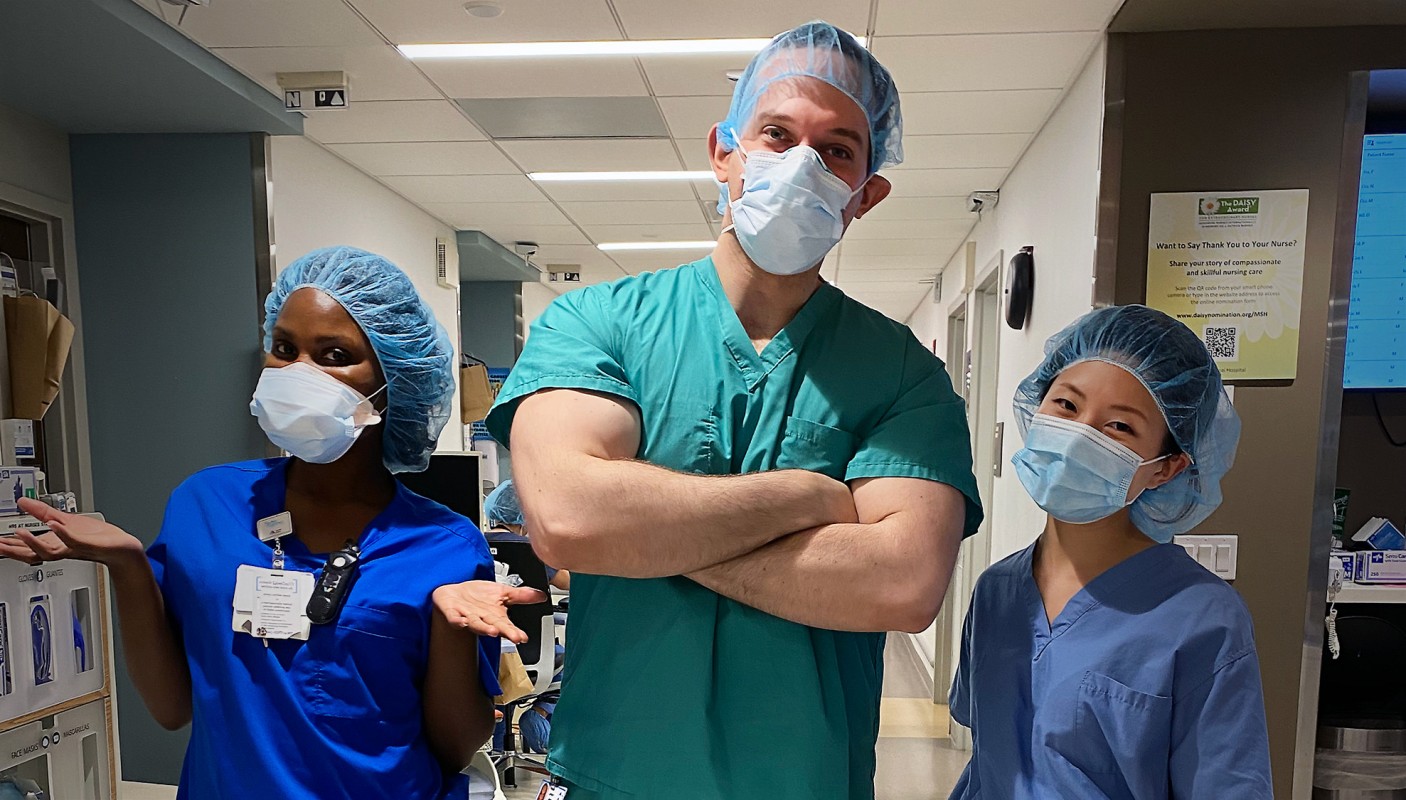Alum research shows a connection between EKG pattern and COVID outcomes

As the pandemic’s first wave overtook the New York City area, Dr. Joshua Lampert ’11 volunteered for 12-hour shifts in Mount Sinai Hospital’s cardiac intensive care unit. The crushing number of coronavirus cases transformed the unit into one dedicated to the treatment of COVID-19.
A fellow in cardiology, he noticed something peculiar. When the electrocardiogram (EKG) showed a particular pattern change, patients became sicker and often died. He realized that these EKG readings, a measure of the heart’s electrical activity from the surface of the chest, could potentially be significant and warranted further study.
His research on the phenomenon, “Prognostic Value of Electrocardiographic QRS Diminution in Patients with COVID-19,” was published recently in the Journal of the American College of Cardiology, one of the major cardiology medical journals.
“The timing of these changes gives frontline providers an opportunity to catch this before the patient gets worse and affords them the opportunity to reassess the patient and potentially escalate therapy or intensify observation,” said Lampert, who will remain at Mount Sinai for a two-year fellowship in electrophysiology, a sub-specialty of cardiology that focuses on the management of heart rhythm abnormalities.
Think of the heart as a biological machine that pushes blood around the body. An electrical system powers its pumping function, and electrophysiologists are essentially “electricians,” Lampert explained. Becoming an electrophysiologist is a lengthy affair: four years of undergraduate work, another four years of medical school, three years of an internal medicine residency, three years of cardiology and another two years of EP training.
Research can be a good way to gain access to competitive programs and subspecialties, such as EP. As a field, cardiology is fertile ground for research projects and randomized clinical trials, he said.
The journal article focuses on LoQRS, which refers to the amplitude, or height, of the QRS complex on the EKG. This represents the electrical depolarization of the ventricles, the major pumping chambers of the heart.
“If the height of the QRS shrinks either below a certain threshold or even relatively by at least 50% compared to a patient’s prior EKG, the patient is at high risk of dying,” Lampert explained.
For COVID-19 patients with LoQRS, the median time to death was 52 hours. He’s continuing to research the phenomenon, along with other cardiology-related research projects, including one that uses machine learning.
At Binghamton
A Long Island native, Lampert was exposed to the world of medicine early: his father is a physician and his mother a pharmacist.
“I always wanted to help people and sought to someday become the doctor that earned the trust of both his colleagues and his patients,” he said.
A biological sciences major and part of the Phi Beta Kappa honor society at Binghamton University, he noted that many of his friends on the pre-health track ended up earning admission to medical school; he earned his own medical degree at SUNY Downstate Health Sciences University, where he was part of Alpha Omega Alpha, the top medical honor society at allopathic schools.
Prior to his fellowships at Mount Sinai, Lampert completed his internal medicine training at Columbia University Medical Center.
He found Binghamton’s pre-medical program motivating and supportive, as well as classes outside the program. Some of the courses that made a particular impact were nutrition and weight training with Health and Wellness Studies lecturer Sarah Thompson. In both, she provided students with motivation and tools they could use long after they left the classroom, he remembered.
“I had the opportunity to take a variety of courses spanning the science prerequisites to music theory,” he said. “I made some amazing friends along the way, and perhaps most importantly, met my now wife, an exceptional lawyer and commercial litigator who herself was just listed among the ‘ones to watch’ in her field.
“I had a phenomenal experience at Binghamton,” he said.
